I think the Dyson Airstrait is a genius product with one rather large flaw - but I'd still recommend it
Wet-to-dry styling made easy

Shannon Lawlor
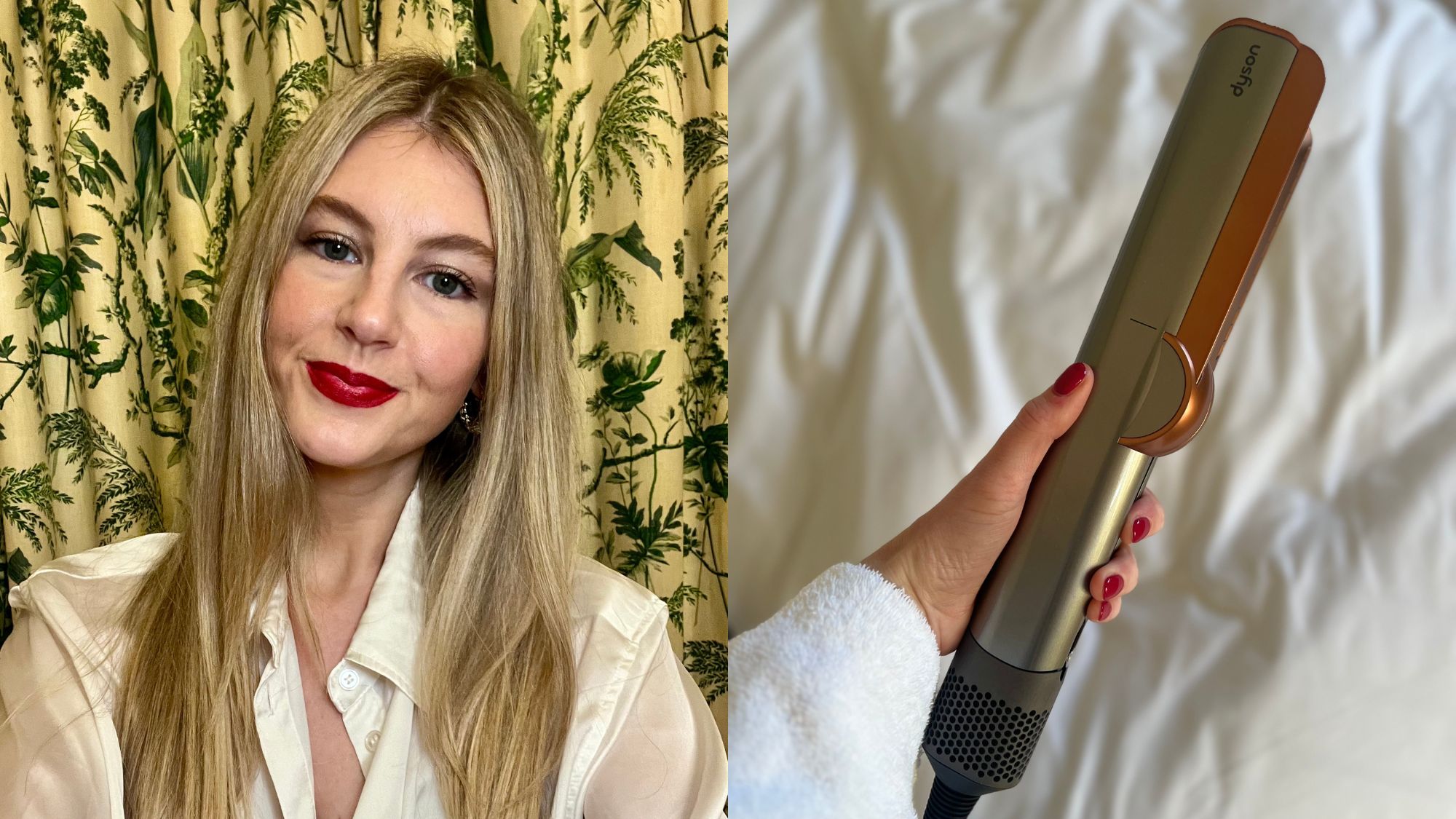
After waiting for what felt like an eternity, the Dyson Airstrait—a wet-to-dry styler that promises to fully dry and straighten hair in one, with no heat damage—hit the UK market earlier in the year, and it's quickly become one of the brand's most talked about tools to date.
When Dyson launches a new hair tool, you can expect pandemonium. The first tool Dyson released, the Supersonic hairdryer, is now a mainstay in salons across the world. Its low-heat but powerful nature helps to optimise shine and minimise hair damage. The Airwrap (which, by the way, has a few alternatives, but we can't say they truly compare) changed the blowdry game for good, with people being able to achieve a bouncy blowdry at home with ease for the first time ever. Then came the Corrale—a cordless hair straightener, which was Dyson's first ever hair tool that didn't focus on air flow. The Airstrait put Dyson back in the air flow game and it's been met with rave reviews.
I rarely apply heat to my hair, but when I do I blowdry and follow with straightening to smooth, so the Airstrait appeals to me and my routine. I was incredibly curious about it and couldn't wait to get it home to trial.
But first, let's learn a little more about it.
What is the Dyson Airstrait?
In short, the Dyson Airstrait is a wet-to-dry hair straightener suitable for all hair types. Stylers of this type have, historically (ghd Duet Style excluded—but more on that later), caused immense heat damage, but the Dyson Airstrait promises no heat damage when used in the wet-to-dry mode. In fact, Dyson claims it maintains "the strength and healthy look and feel of [your] hair".
With two arms, you clamp the hair at the root and glide it down through the lengths, while a precisely angled, high-pressure blade of air styles and straightens—whatever the hair type.
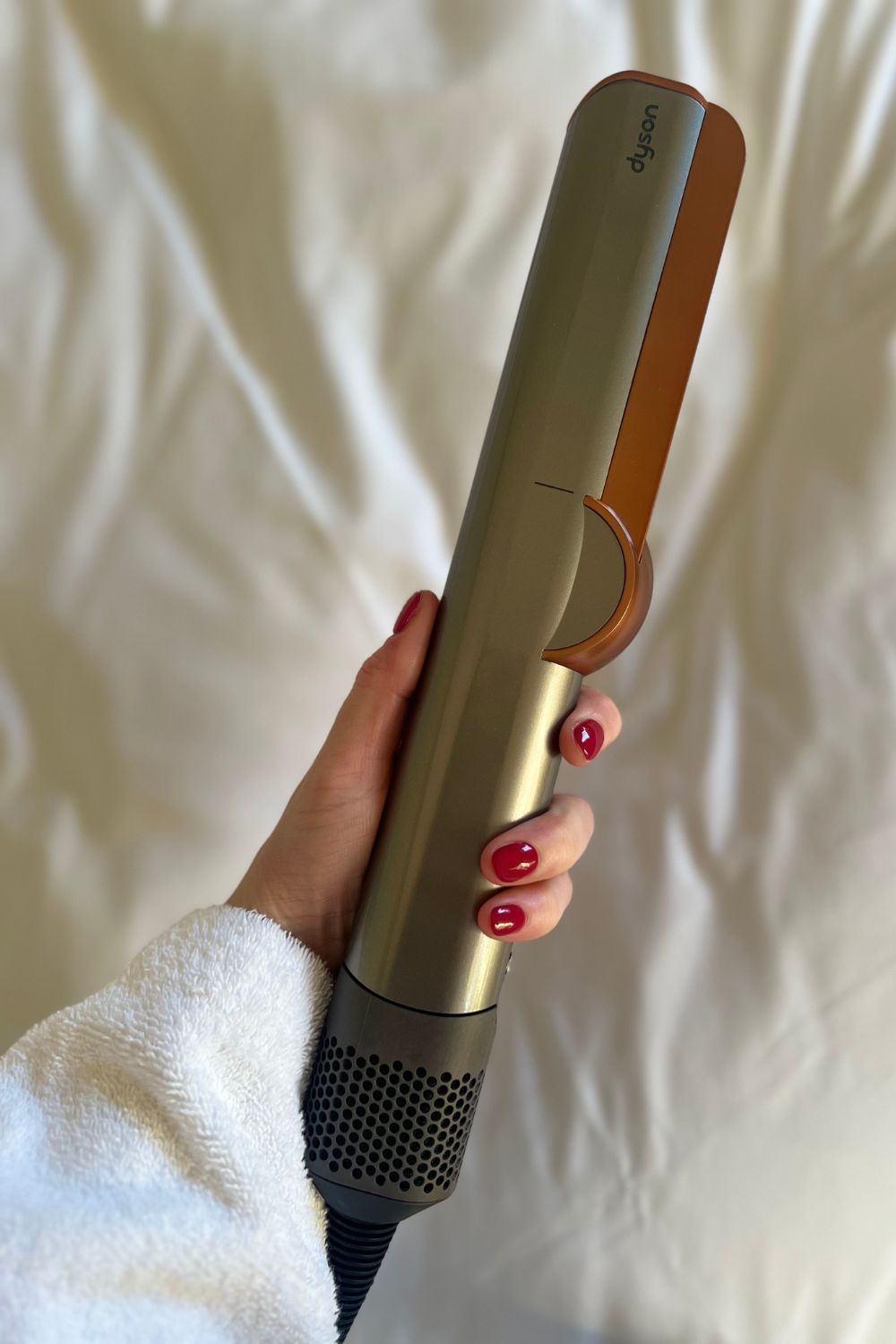
Does the Dyson Airstrait use heat?
Yes, the Dyson Airstrait uses heat—but not a lot. As with all of the Dyson hair tools, the Airstrait uses intelligent heat controls. In fact, it uses very high-tech sensors to monitor the temperature of the air flow 30 times every second. When the straightener is in 'wet' mode, you can choose between a 80°C, 110°C or 140°C temperature. In 'dry' mode, choose between 120°C, 140°C or a top-up 'boost' option.
Dyson's Global Styling Ambassador, Matthew Collins, said that for curly and coily hair, the key is to ensure that hair is really really damp when you start to style - "almost dripping wet" - in order to achieve a smoother finish.
Celebrity news, beauty, fashion advice, and fascinating features, delivered straight to your inbox!
On top of this, there are also two speed modes: low flow and high flow. There is also a 'cold shot' to help set the style and boost shine.
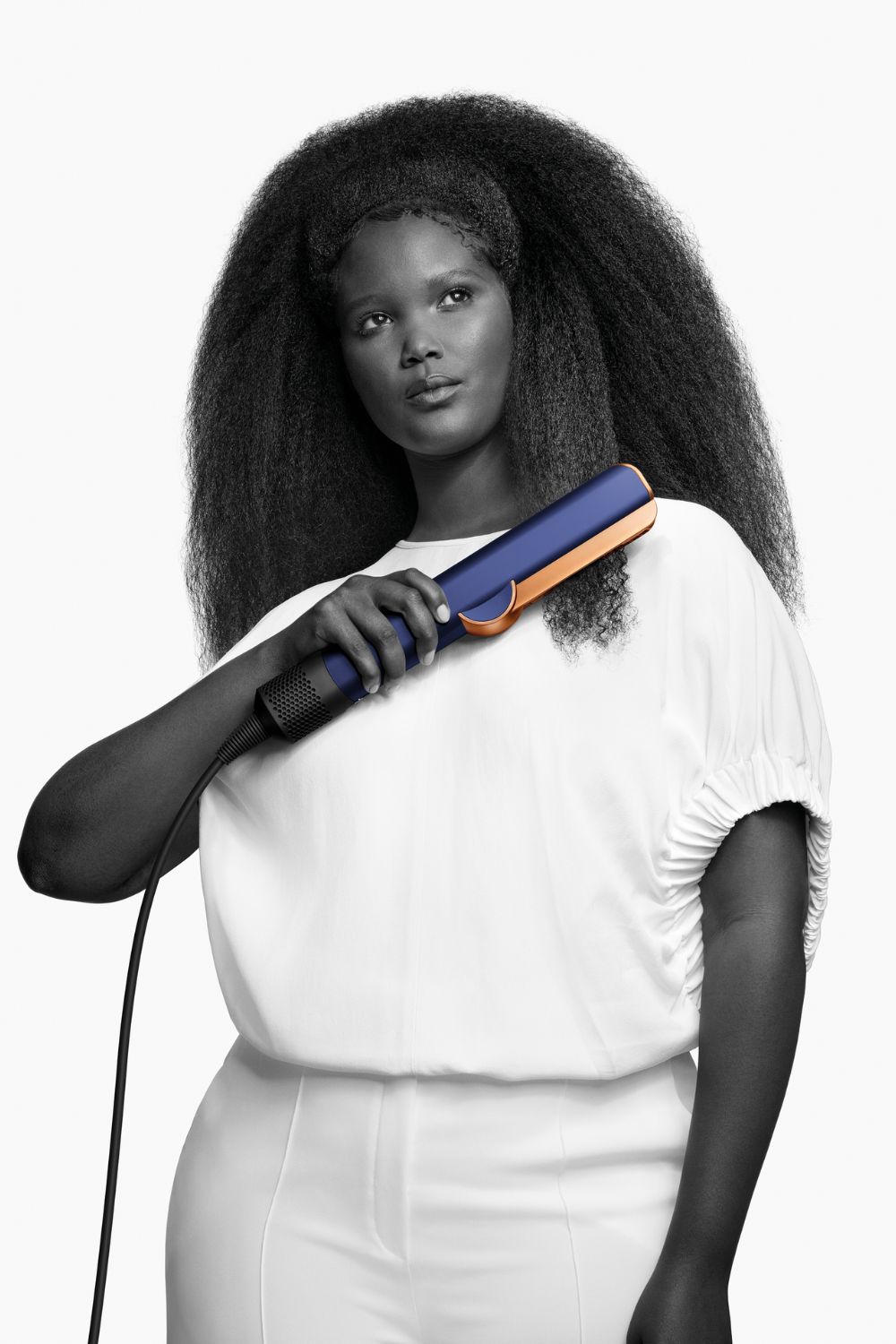
Can you use the Dyson Airstrait on dry hair?
As previously mentioned, there is a 'dry' mode on the Airstrait which increases the heat of airflow to straighten dry hair. It is worth noting here that the 'no heat damage' claim is exempt when the Airstrait is used in 'dry' mode—with hotter temperatures, you can't guarantee no damage, so we'd recommend using a heat protection treatment as normal.
Dyson Airstrait reviewed by a beauty editor
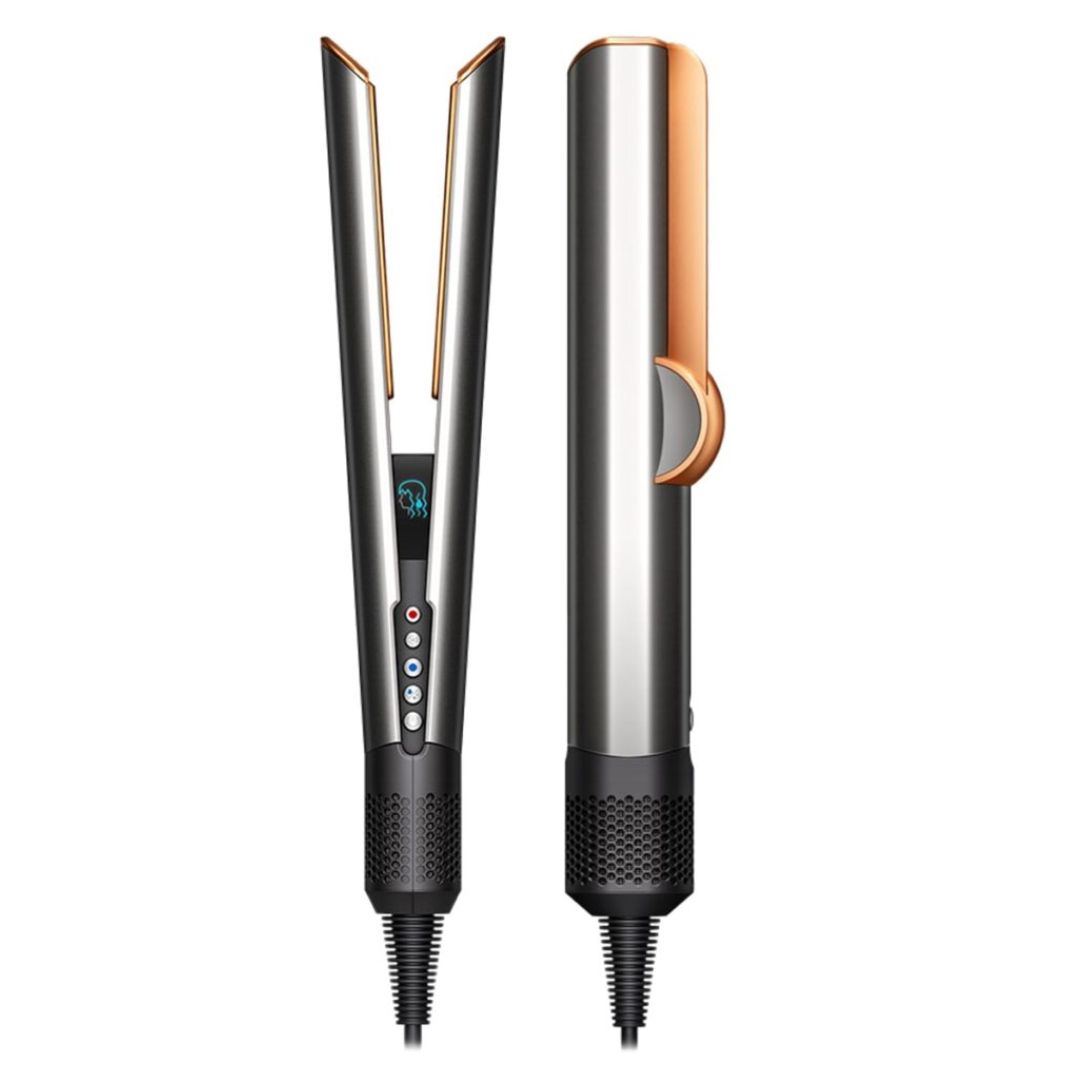
Dyson Airstrait
Reasons to buy
Reasons to avoid
I have long fine hair, but lots of it so it appears thicker than it actually is. I also religiously bleach my hair every 6-8 weeks and never cut it, so my hair takes quite a beating. As I have no plans to give up my hair appointments with my colourist (James Samuel at Hershesons in case you're after a colour wizard) I try to counter balance it by avoiding applying damaging heat to my hair. This in theory works well, however as it's winter, leaving the house with wet hair is not the one so I have been reaching for my hair dryer (the Dyson Supersonic, FYI) more. I'm by no means a blowdry expert and I find that my hair ends up looking frizzy after it's been dried so I then have to straighten it. My preferred straightener is the GHD Platinum+ (to me, it's the best GHD straightener on the market). I find this all very time consuming so the Airstrait really appeals to me at the moment.
My first impressions when I got the Airstrait out of the box was that, as ever, Dyson has created a smart and sleek designed tool - fitting in nicely with the rest of the beauty offering. As you might expect it looks very similar to the Corrale straightener, but instead of heated plates on the inside, there are air vents down the sides of the barrels.
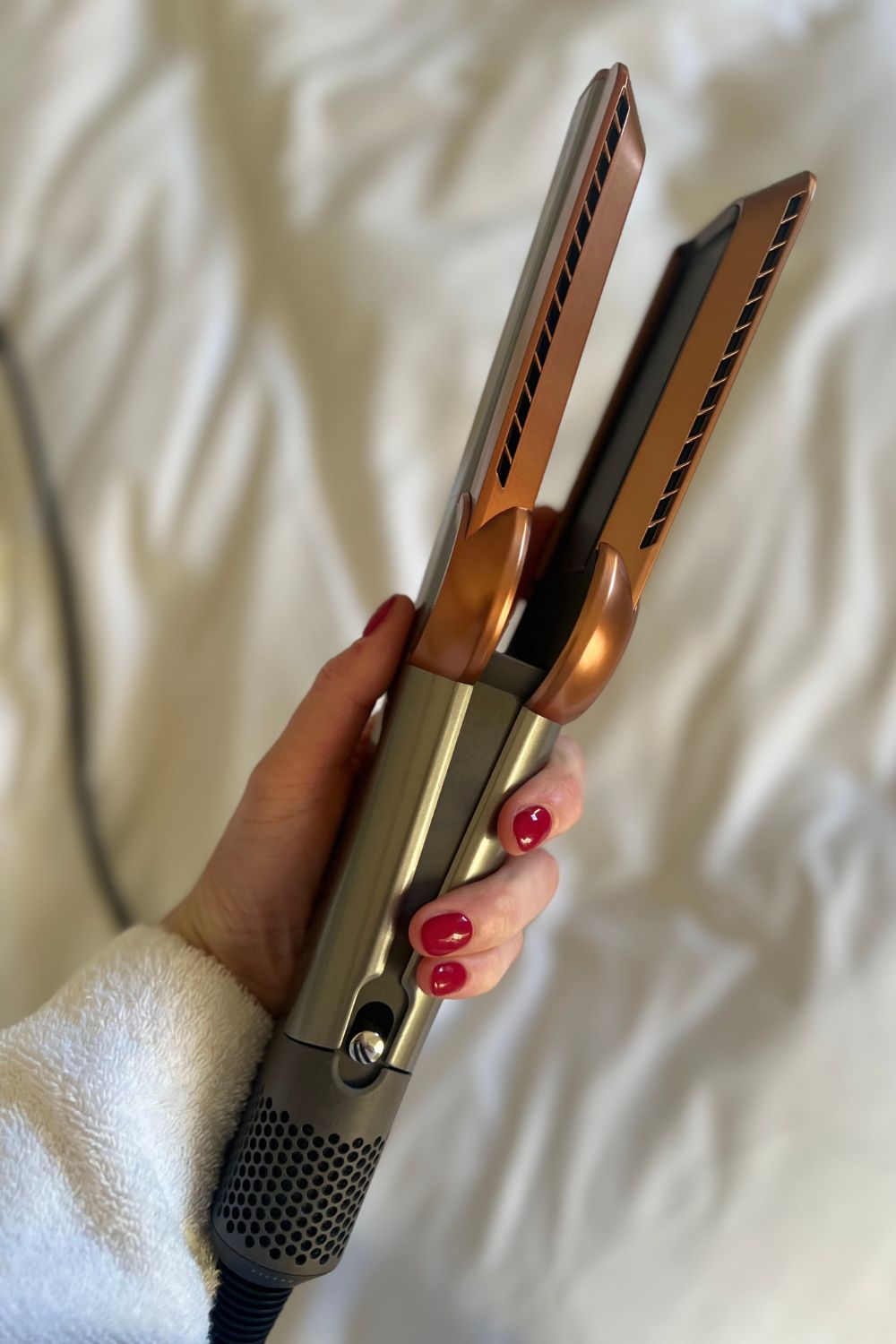
The control panel has five buttons - power, hot and cold, wet/dry setting and airflow - all very self explanatory. On the back you'll find the lock button, which comes into use when you want to use the drying function (more on that later). However, the big sticking point for me is the plug. When I say that the plug is massive, I really do mean enormous - I have never seen a plug like it. The issue that this presents is that if your plug sockets are low down on your walls, and just above your skirting boards, this plug isn't going to fit in. Now of course, this isn't the be all and end all, you can of course use it with an extension lead. But if you want to take this tool away with you somewhere, you're probably going to have to take an extension lead with you. Having spoken with the team at Dyson, they told me that it's all down to EU regulation. Because water is involved, there are more stringent rules in place. The brand is very aware of it and are apparently working on how to reduce the size.


When you first turn the Airstrait on it performs an automatic clean, which clears our the air vents. This lasts less than five seconds. It's then ready to use. The default mode is style from wet, so it comes on and sounds instantly like a very quiet hairdryer. It's here that you can change the heat and air flow settings to suit your hair type and styling needs, just as you would on any other hair dryer. As I have fine hair, I opted for a lower heat of 140°, but because I have a lot of it I went for the fastest airflow.

For my first trial, I used it after washing my hair. I sectioned it into four parts and secured the top two halves on top of my head. You use it just like you would a hair straightener by passing down along your lengths. I've found that the key to speed and smoothness is to take your time with the first movement. When I use this technique, it only takes a couple of more passes on each section for my hair to be fully dry, smooth and straight. Like I said, I'm not a regular hot tool user, but I couldn't believe how smooth and dry my hair was after the first use. It seriously impressed me.
I have to add here that I really struggled to get the Airstrait into the root. So if you're someone who likes to create volume on the crown, this might annoy you. However, there is a way of drying your roots. The button on the back of the tool locks the plates together so that you can direct the air flow from the vents on the sides of the plates exactly where you need it. I've seen Dyson ambassadors drying the roots first and then straightening, but I've found that doing it the other way suits me best.
For my second trial, I wanted to refresh second day hair so used the style from dry function and I have to say that it worked a treat. It smoothed flyaways and brought life back into my hair.
One of the great features of the Airstrait is that it goes into idle mode if you put the tool down for a moment, as soon as you clamp the plates together it kicks back into gear. This helps with saving energy, as well as noise control.
For me, the Airstrait does exactly what I want it to do - it dries my hair quickly and smooths the lengths so my hair doesn't look frizzy. I would say that the primary difference between this and regularly straightening your hair is the air element, which I know must sound obvious, but what I mean by that is how the hair looks having been straightened with air rather than hot plates. Hair doesn't look poker straight and lifeless when you use this, which I think it can when you use traditional straighteners. Global Dyson Ambassador, Dylan Bradshaw, likened it to when you have your hair blowdried in the stylist's chair and they smooth your hair out with a round brush and I couldn't agree more.
I know lots of people use their straighteners to add movement - like curling and waving - and this isn't going to do that, so that might put a few people off. The Airstrait is exactly what it sets out to be - a hair dryer and straightener in one. If you like to wear your hair straight and use both a hair dryer and straightener on a daily basis, I think this could revolutionise your routine - timewise and for damage control and in that respect I think it's worth the money.
How does the Dyson Airstrait compare to the ghd Duet Style?
We know what you're thinking, how does this differ from the ghd Duet Style? Well, for starters, the Airstrait doesn't use hot plates at all—it relies entirely on its high-tech air flow. When in its 'shine shot' mode (the equivalent of the Airstrait's 'dry' mode), the Duet Style's hot plates heat up to 185°C, acting as a normal ghd hair straightener. The Airstrait's air flow blades reach up to 140°C.
On paper, the biggest difference between the two is that the ghd Duet Style relies on heated plates to achieve a straight, high-shine look, while the Dyson Airstrait leans on its high-tech airflow technology to create a powerful 'blade' of air.
The differences in practise?
I found that the Airstrait gave my hair a glossier and more healthy look than the Duet. I also found that the Duet's plates dragged along my wet hair, which was uncomfortable. For me, the Airstrait has instantly become my go-to hair styler, but I'm sure traditionalists who like the idea of being able to use heated plates to set a style will prefer the Duet.

Katie Thomas is the Senior Beauty Editor at Marie Claire UK. With over 10 years of experience on women's luxury lifestyle titles, she covers everything from the best beauty looks from the red carpet and stand out trends from the catwalk, to colonic irrigation and to the best mascaras on the market.
- Shannon LawlorExecutive Beauty Editor